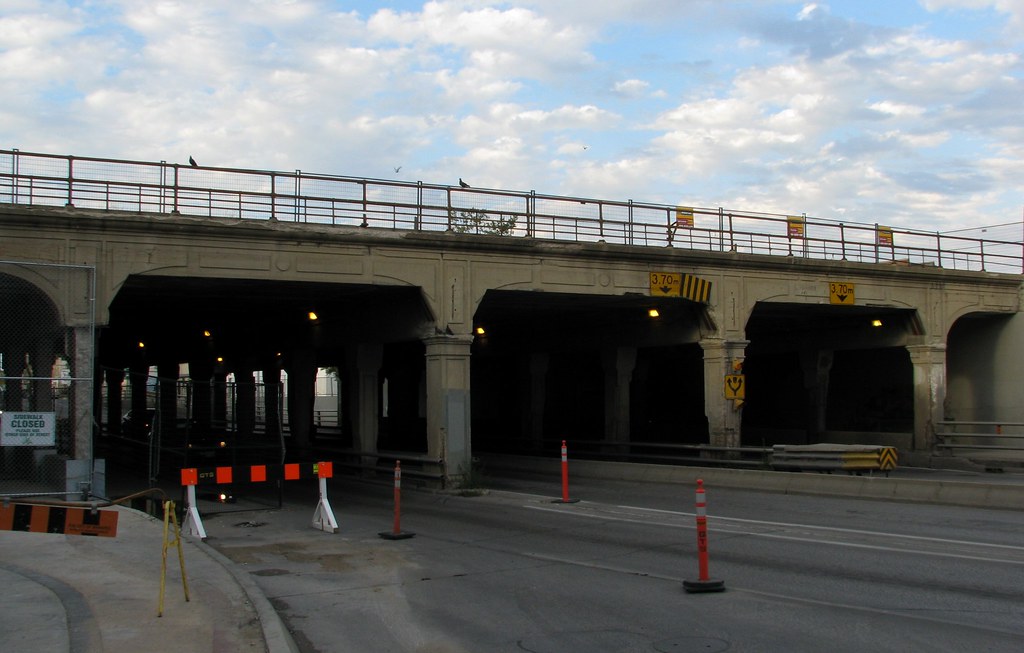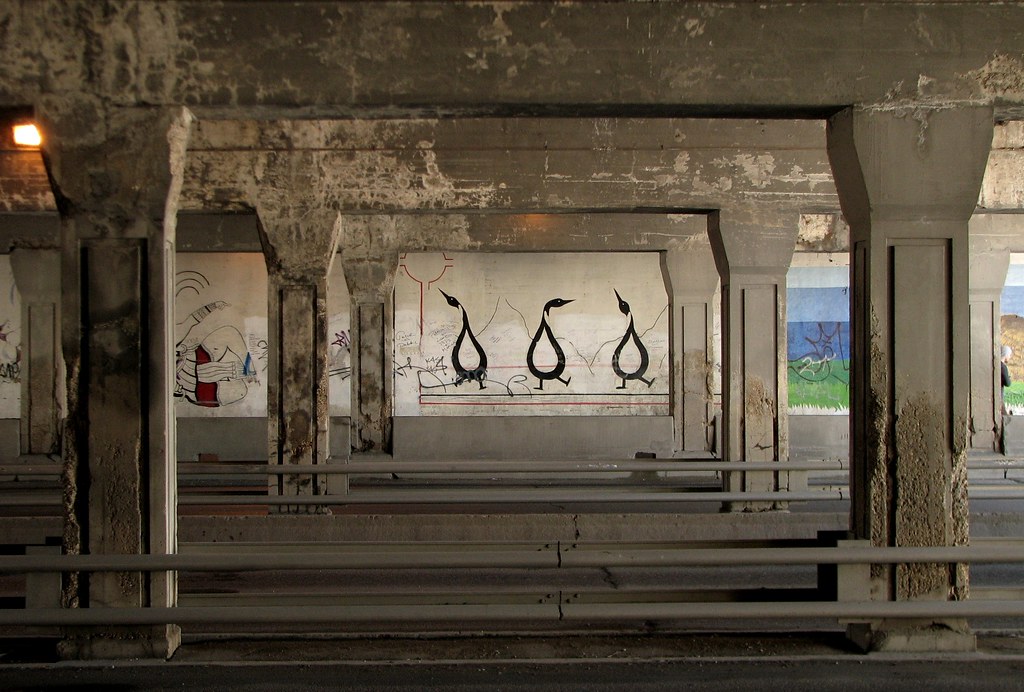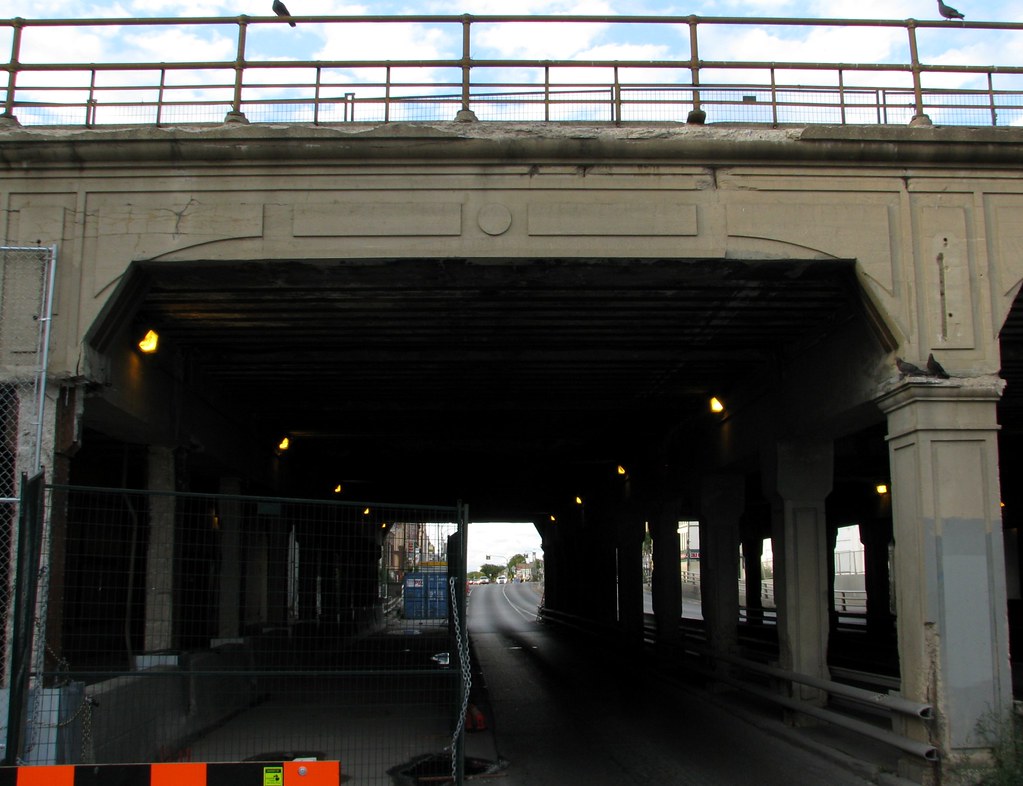Place: Main Street Underpass
Location: Main Street at Higgins Avenue
Architect: Canadian Pacific Railway
Contractor: Deeks and Dueck
Cost: $125,000
Opened: November 1904
In 1900, the CPR announced a big expansion and restructuring of its national rail network.
For Winnipeg, this meant a $5 million investment that included new passenger depot, a hotel, (the Royal Alexandra, the largest in the country), the centralization of various maintenance buildings into the Weston shops, and a new cargo yard. It also meant that a lot more rail traffic would be passing through town.
At the time, the options for crossing the tracks in the city were limited to the narrow, ca. 1899 Salter Street Bridge and a grade crossing at Main Street. The latter was by far was the busiest and the only one that streetcars could operate on.
The CPR expansion meant that the number of tracks crossing Main Street would increase from four to eight, which caused despair among many citizens, business owners and civic officials.
About a dozen trains already crossed the intersection each day with an average crossing time of about 5 minutes each. It was a scheduling inconvenience in the summer and a potentially deadly wait for people and horses in the winter.
In 1900, the city and CPR agreed that new crossing was needed and that it should be a "subway" rather than an overpass. In 1903, negotiations began about the specifics of the structure.
March 7, 1904, Winnipeg Tribune
This set off a brief storm of protest before it could go before council as a whole to be ratified.
A number of letters to the editor were published and delegations appeared at city hall to demand that the CPR use a second option - steel.
The Winnipeg Tribune published "ten important objections" to a concrete subway written by the North End Ratepayers' Association.
They argued that a concrete underpass and its "forest of pillars" would give the sidewalks a "tunnel like appearance". With steel, which required fewer and narrower pillars: "a person walking upon one sidewalk could readily see any person passing on the opposite and there is a general airiness in the passage way.”
It was also noted that a steel train bridge required a shallower deck which meant that the depth of the subway itself could be around a couple of feet shallower. This was an important consideration in a city prone to flooding.
February 23, 1904, Winnipeg Tribune
In the end, council voted in favour of the reinforced concrete underpass at their February council meeting, though it was close. The mayor had to cast the deciding ballot in favour of it.
Afterwards, many of the members who voted against concrete walked out of the chamber in disgust, including Alderman Fry who called out to his colleagues sarcastically, congratulating them for voting in favour of the “Main Street Sewer”
Recently opened underpass with CPR Hotel still under construction (Source)
Construction began in late May and the structure, both the underpass and the train bridge, were open for service by November.
October 11, 1915, Winnipeg Tribune
The following year, the city made some improvements of their own. They raised the roadway of the subway about three feet to lessen the steepness of the grade to 2.5%.
The new, improved underpass opened in October 1915.
A few years after it opened, the underpass was already heavily congested. The opening of new crossings such as a grade crossing at King Street, the Arlington Bridge, a new Salter Street Bridge and the Disraeli Freeway helped alleviate some of the traffic issues.
In the 1970s, some at the city, including Mayor Juba, mused that the underpass should be replaced with a wider structure after the Royal Alexandra hotel was demolished. The idea didn't get very far.
Over the years, few changes have been made to the structure. At some point the rounded openings were cut away to make them square, allowing for greater clearance.
The dark, unappealing interior of the underpass has been an issue since day one. From time to time new lighting schemes have been used to help brighten the space. The most recent was in the summer of 2017.
Related:
My photo album of the Main Street Underpass








No comments:
Post a Comment